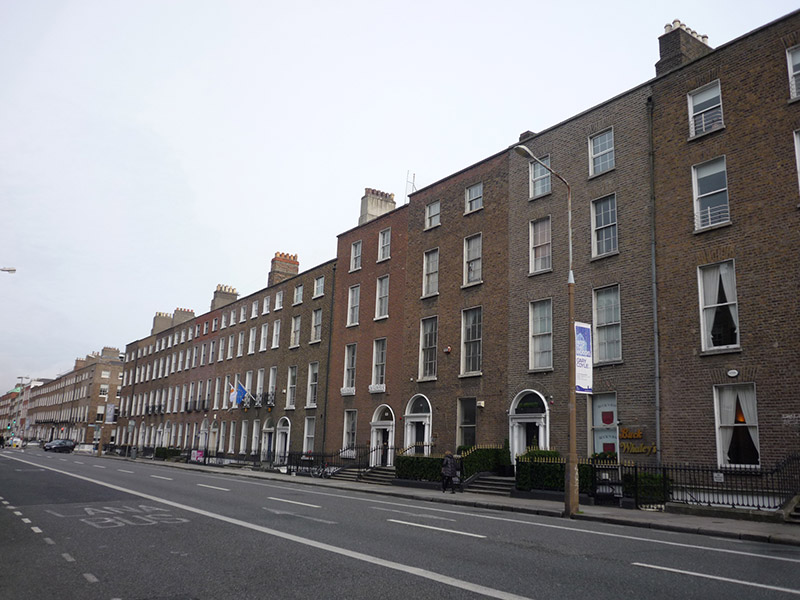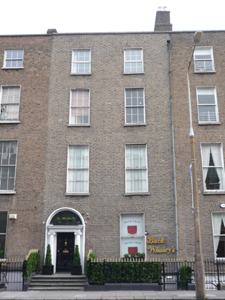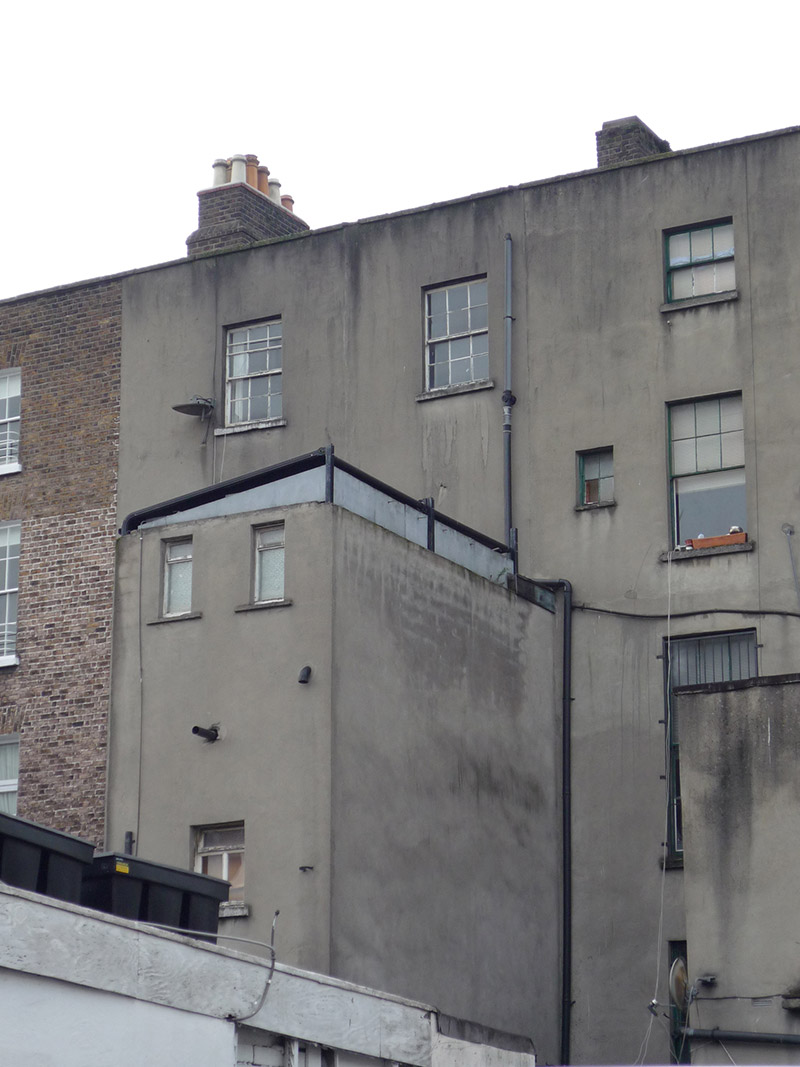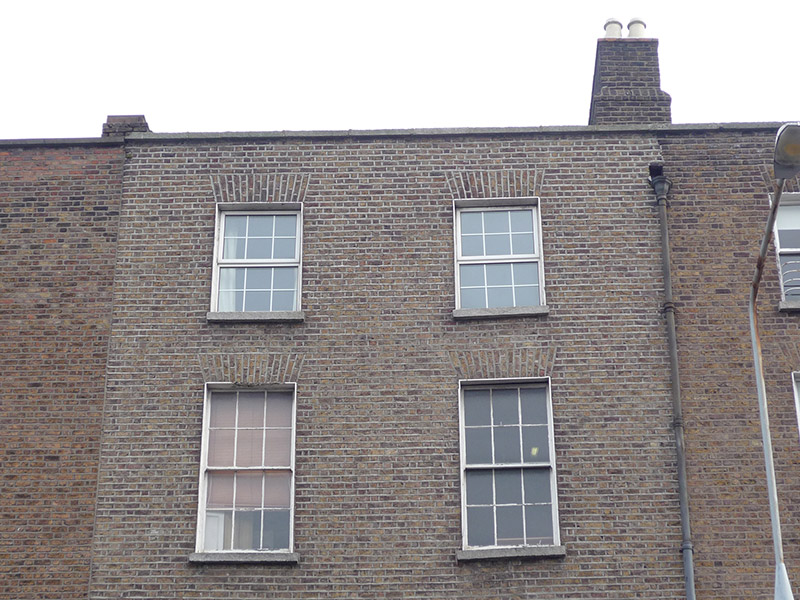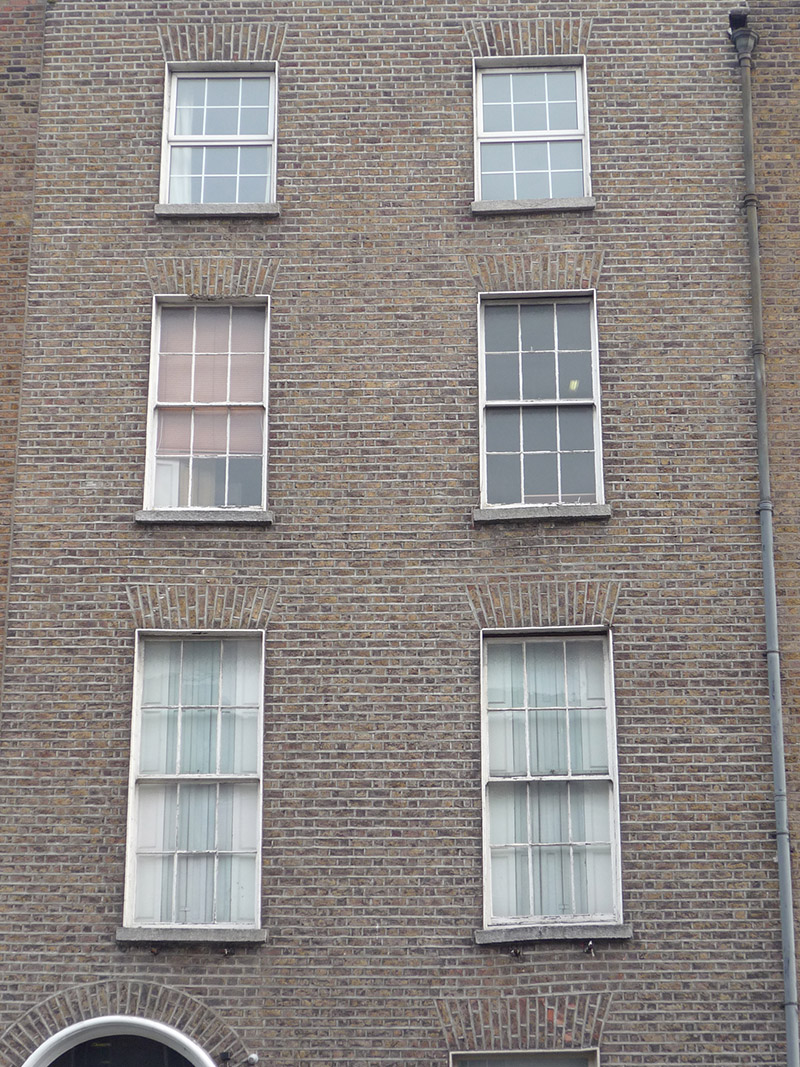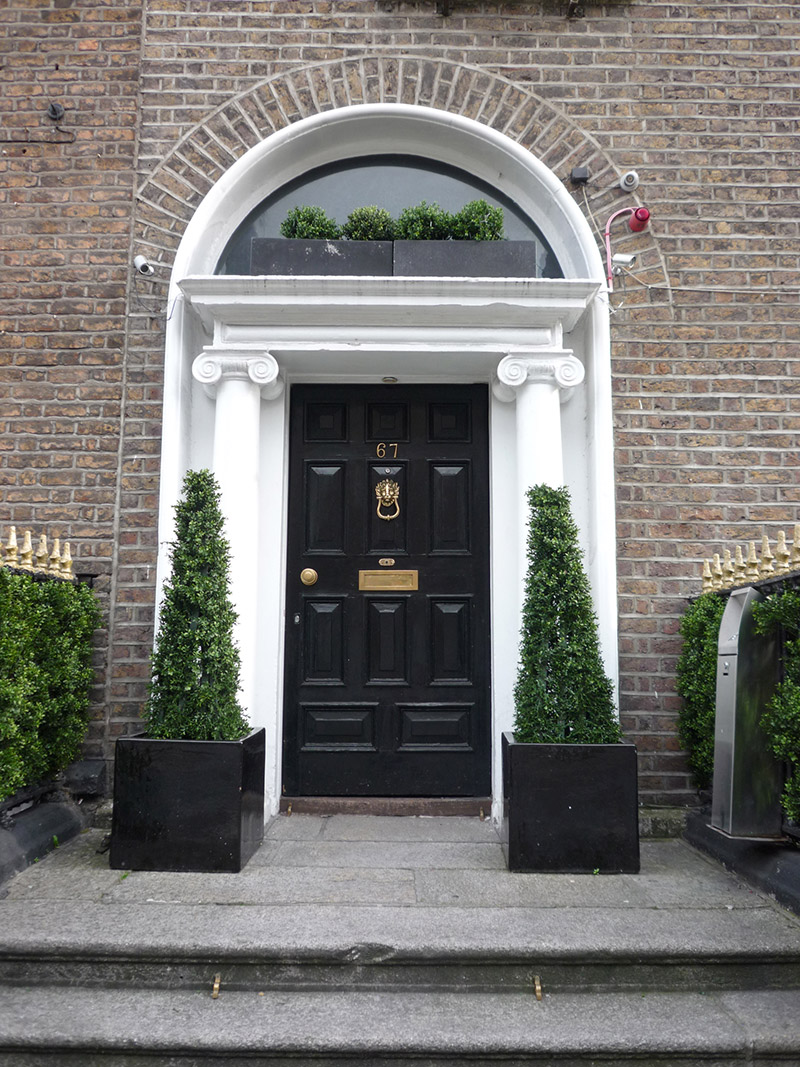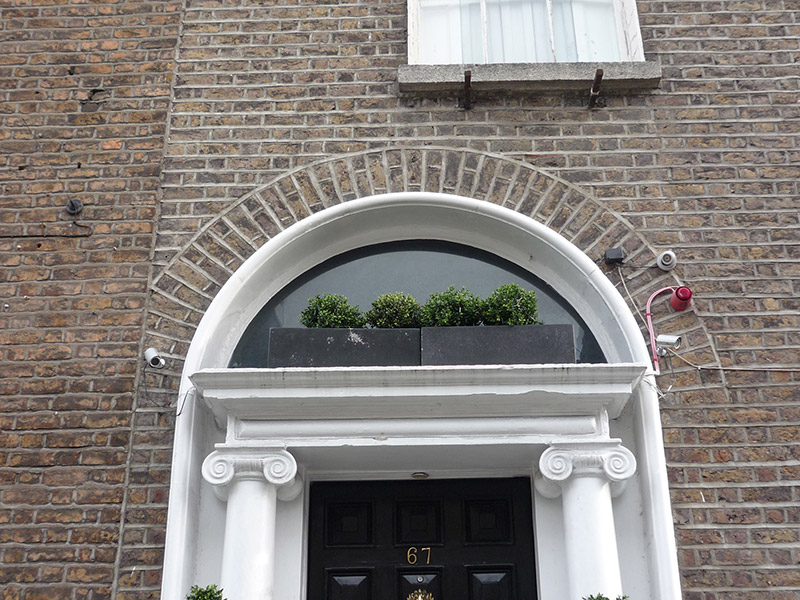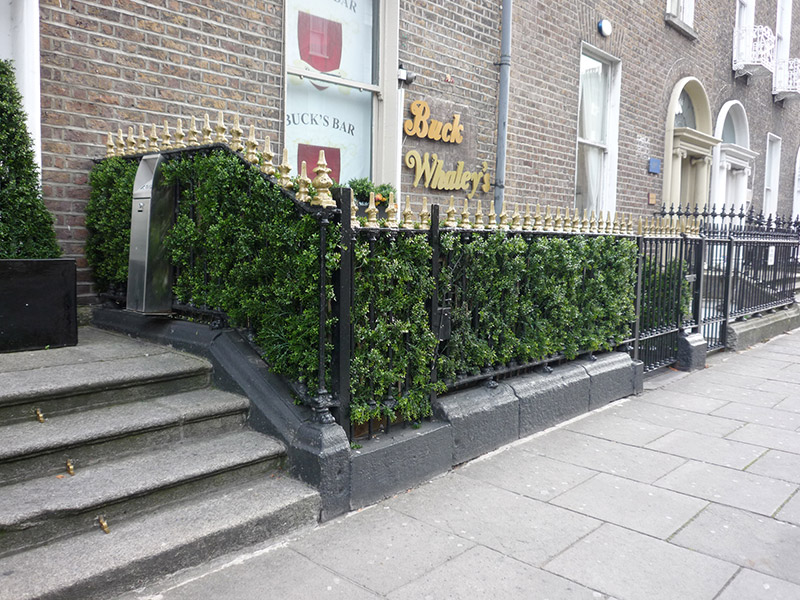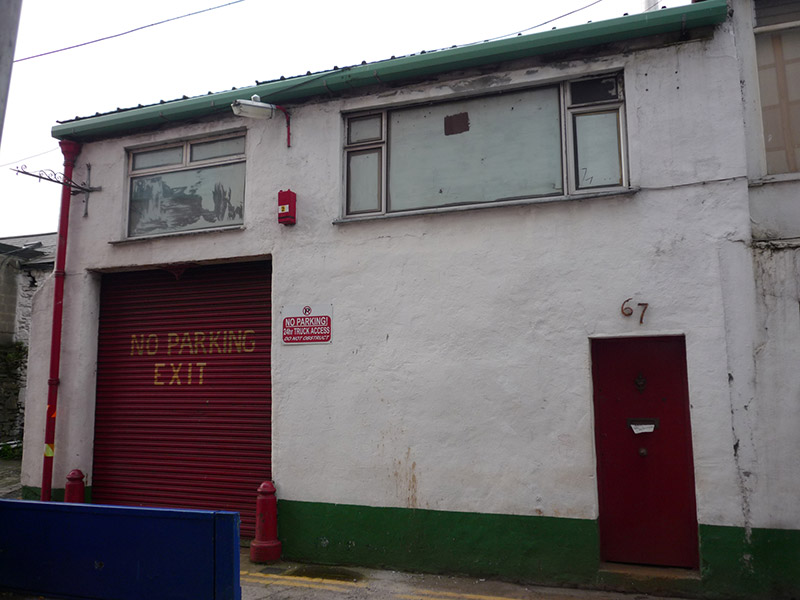Survey Data
Reg No
50930255
Rating
Regional
Categories of Special Interest
Architectural, Artistic
Original Use
House
In Use As
Office
Date
1820 - 1840
Coordinates
316345, 232902
Date Recorded
20/10/2015
Date Updated
--/--/--
Description
Terraced two-bay four-storey over basement former townhouse, built c. 1830, with three-storey return to rear (north) elevation. Now in use as public house. M-profile roof concealed by brick parapet with masonry coping, brick chimneystacks to party walls, shouldered to east party with lipped yellow clay pots. Parapet gutters with cast-iron hopper and downpipe to east side and uPVC downpipes to rear (north). Brown brick walling laid in Flemish bond, rendered walling to basement beneath granite plinth course. Rendered walling to rear (north) elevation. Square-headed window openings with brick voussoirs, patent reveals and granite sills. Plain rendered surrounds to basement and rear openings. Largely six-over-six sliding timber sash windows with convex horns, cavetto horns with some historic glass to first floor, replacement one-over-one to ground floor with ogee horns and uPVC casements to third floor (south elevation). Internal timber shutters to first floor windows. Recent timber casements to return. Round-headed door opening to principal elevation (south) with brick voussoirs, moulded reveals with recessed doorcase having prostyle Ionic portico with moulded cornice and panelled frieze over Ionic columns, plain glass fanlight and timber panelled raised-and-field door. Granite entrance platform with cast-iron boot scraper, approached by four nosed granite steps, flanked by iron railings with decorative cast-iron finials and corner posts over granite plinth enclosing basement area. Enclosed yard to rear (north). Modernised two-storey mews building to north on Leeson Close, having a square-headed integral carriage-arch flanked by cast-iron coach-stops.
Appraisal
Despite the loss of some historic fabric, this former townhouse forms part of a relatively intact terraced row. Nos. 67-9 (50930253-5) were likely built by Thomas Dockerell, who leased the sites from the Hon. Sidney Herbert. (Case, 2005)Although the street is largely characterised by typical late-Georgian townhouses, the variations in detailing, proportions and scale are indicative of the speculative nature of development. Nos. 63-9 (50930253-9) proceeded those to the west and are subsequently grander in scale, defined by higher floor levels and larger window openings. The main route from St. Stephen’s Green to Donnybrook, Leeson Street remained largely undeveloped until the late-eighteenth century and was almost entirely complete by 1836.
